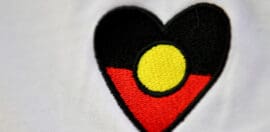New data reveals lower rate of Indigenous kids in youth justice

19 May 2020 at 3:34 pm
But Indigenous children are still 16 times more likely than non-Indigenous children to be under supervision
The rate of Aboriginal and Torres Strait Islander children under youth justice supervision has fallen over the past five years, new Australian Institute of Health and Welfare (AIHW) research shows.
The AIHW’s latest report explores young people aged between 10 and 17 under youth justice supervision both in the community and in detention.
AIHW spokesperson Anna Ritson said between 2014–15 and 2018–19, the level of Indigenous over-representation in youth justice supervision had stabilised.
“The rate of Indigenous young people aged 10 to 17 under supervision on an average day fell from 176 to 172 per 10,000. The rate of non-Indigenous young people fell from 12 to 11 per 10,000,” Ritson said.
On an average day in 2018–19, there were 5,694 young people under youth justice supervision because of their alleged involvement in crime.
Indigenous young people were 16 times more likely to be under supervision as non-Indigenous young people in 2018–19.
“Although only about 6 per cent of young people aged 10 to 17 in Australia are Aboriginal or Torres Strait Islander, half (2,448) of the young people under supervision on an average day in 2018–19 were Indigenous,” Ritson said.
The Law Council of Australia has expressed its concern with the new figures.
Law Council president, Pauline Wright, said while any drop in the rates of youth justice supervision should be cause for celebration, the latest data only served to highlight systemic problems.
She said the detailed statistics painted a picture of an Australia where being
Indigenous, coming from a remote area, or growing up in low socioeconomic circumstances increased a person’s likelihood of contact with the youth justice system.
“Indigenous children continue to be alarmingly overrepresented in the youth justice system,” Wright said.
“Indigenous children are 22 times more likely to be in detention and 15 times more likely to be under community-based supervision.
The Law Council is calling for early preventative and diversion services to be put in place, with a focus on investing in Indigenous community-led solutions, particularly in remote areas.
Wright said the COAG Closing the Gap Refresh process must include a strong youth and adult justice target as part of its revised approach.
“The Law Council believes that complementary Closing the Gap Refresh targets are also critical, with an aim to reduce the proportion of Indigenous children entering out-of-home care, which often provides a pathway into the youth justice system,” she said.







